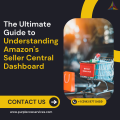This is why it is important to develop a strong inventory management strategy that will allow you to maintain the right balance of inventory and avoid costly mistakes.
In this blog post, we will discuss some tips for effectively managing your inventory on Amazon Vendor Central to maximize your sales and minimize the risk of lost revenue.
Set Up Automated Replenishment
Automated replenishment is a powerful tool that can help you avoid stockouts by automatically reordering products when inventory levels reach a predetermined threshold. This ensures that you always have enough stock on hand to fulfill customer orders. To set up automated replenishment, go to the “Inventory Planning” tab in Vendor Central and create a replenishment order based on your sales history.
Use Amazon’s Forecasting Tools
Amazon’s forecasting tools can provide valuable insights into demand patterns for your products. The tools use historical sales data to forecast future demand and suggest the optimal reorder quantities and lead times for each product. This can help you make data-driven decisions about how much inventory to carry and when to reorder.
Monitor Your Inventory Levels
Regularly monitoring your inventory levels is essential to maintaining optimal stock levels. You can use the “Inventory Dashboard” in Vendor Central to track inventory levels and set alerts for when stock levels are low. This will help you avoid stockouts and overstocks, which can lead to lost sales and increased costs.
Optimize Your Lead Times
Lead time is the time it takes for a supplier to deliver products to Amazon’s warehouse. Optimizing your lead times can help you reduce the risk of stockouts and ensure that your products are available for sale when customers want them. To optimize your lead times, work closely with your suppliers to reduce transit times and streamline the delivery process.
Use FBA for Fulfillment
Using Amazon’s Fulfillment by Amazon (FBA) service can help you reduce the burden of managing inventory and shipping orders. With FBA, Amazon handles the storage, picking, packing, and shipping of your products, allowing you to focus on growing your business. FBA can also help you increase your sales by making your products eligible for Prime shipping, which is highly valued by Amazon customers.
Keep an Eye on Seasonal Trends
Seasonal trends can have a big impact on your inventory management strategy. For example, if you sell outdoor gear, you may see a spike in sales during the summer months. By tracking seasonal trends and adjusting your inventory levels accordingly, you can avoid stockouts during high-demand periods and minimize overstocks during slow periods.
Plan for Growth
As your business grows, your inventory management strategy will need to evolve to keep pace. This may include investing in new inventory management tools, hiring additional staff, or expanding your warehouse space. By planning for growth in advance, you can ensure that your inventory management strategy remains effective and scalable.
Conclusion
Effective inventory management is critical to the success of your Amazon Vendor Central business. By following these tips, you can optimize your inventory levels, avoid stockouts and overstocks, and maximize your sales and profits. Remember to stay vigilant and adapt your strategy as needed to stay ahead of the competition and achieve long-term success.
Want to effectively manage your inventory on Amazon Vendor Central? Purple Cow has got you covered! Our Amazon Vendor Central Management services can help you optimize your inventory to maximize sales and minimize costs. Trust us to take your inventory management to the next level.














